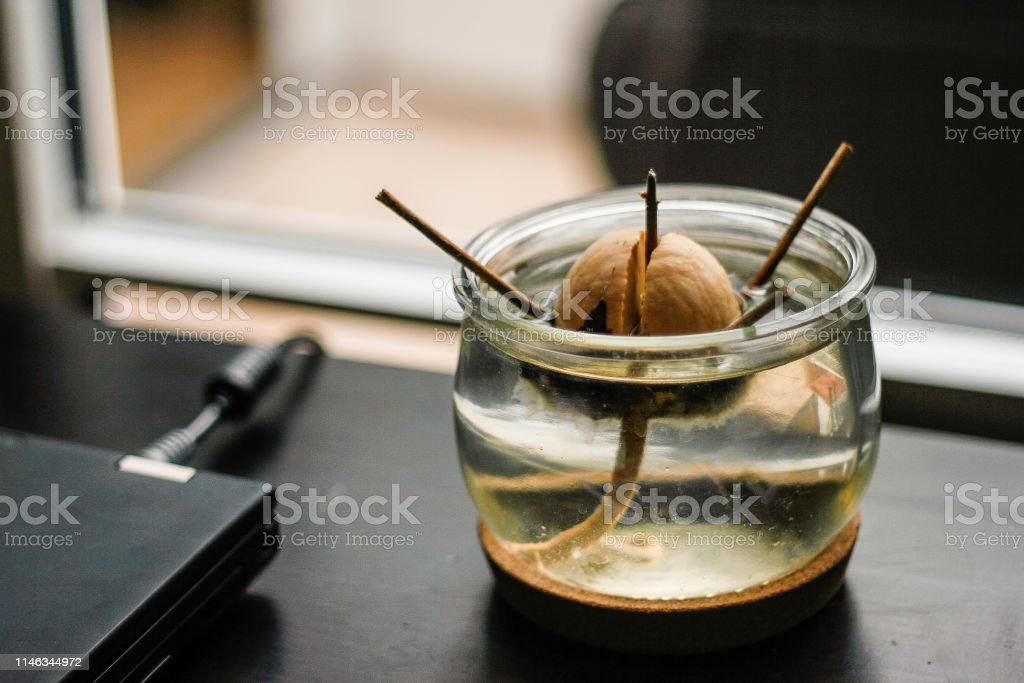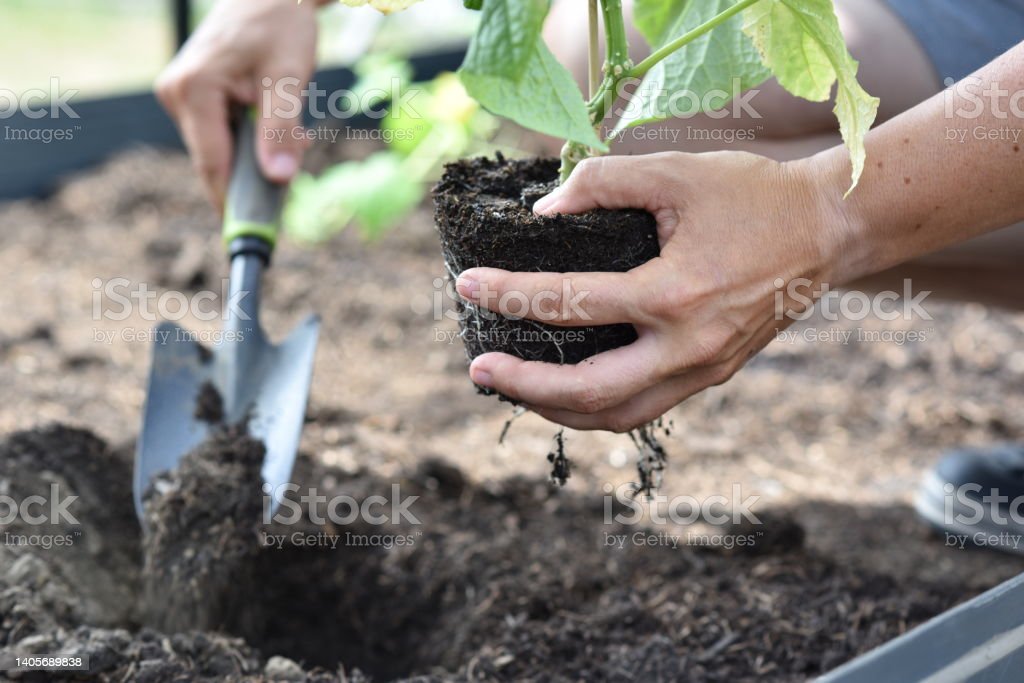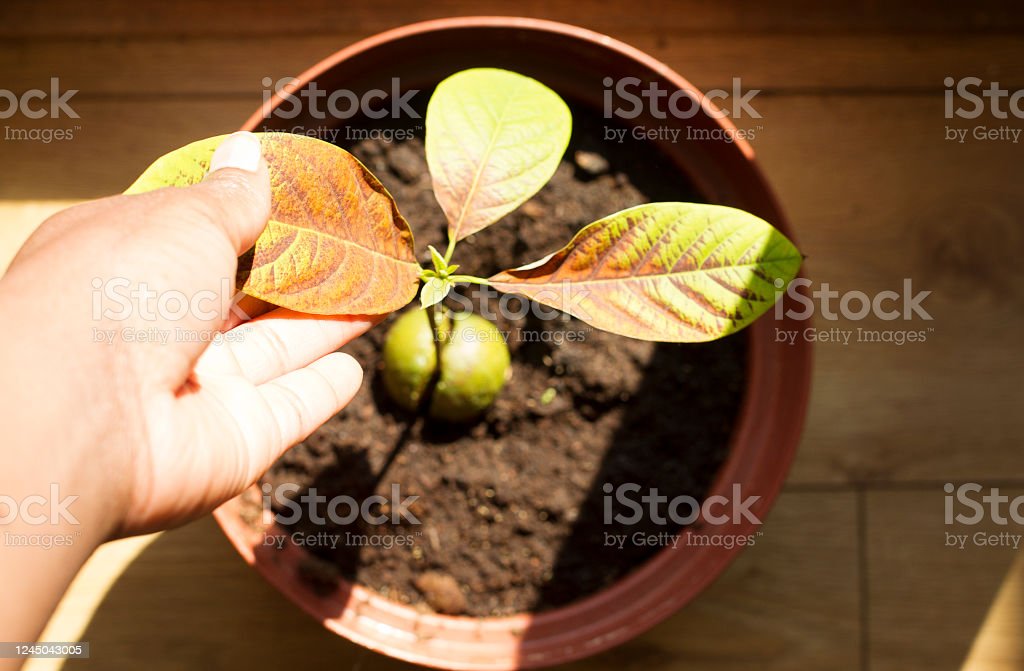How to plant Avocado Seed in soil
Introduction

Avocados have grown in popularity in recent years thanks to their excellent flavour and several health advantages. They may be used in a variety of meals and are an excellent source of vitamins, minerals, and healthy fats. Aside from being a delicious addition to your diet, avocados may also be grown indoors from seeds using soil.
For a number of reasons, planting an avocado seed is an excellent idea. The first benefit is that you may cultivate your own avocado tree and harvest its fresh fruit at home. Second, it is a project that individuals of all ages can find enjoyable and fulfilling. Finally, since avocado seeds are frequently thrown away without being utilised, it’s a fantastic approach to cut waste.
The success of your avocado seed depends on appropriate planting, it is crucial to remember that. There are particular measures that must be taken to guarantee that your seedling grows into a healthy and profitable tree, but many individuals make the error of simply sticking the seed in soil and hoping for the best. We will walk you through the process of planting an avocado seed in soil in this blog article so that you can quickly reap the rewards of your hard work.
Preparing the Seed

The first step after deciding to plant an avocado seed is to get the seed ready for planting. Picking a ripe avocado is crucial since an unripe avocado won’t produce a healthy seed. Gently push on the skin of an avocado to test its ripeness; it should yield slightly but not become overly soft.
Cut the avocado in half lengthwise, then twist the two pieces in opposite directions to split them and remove the seed. The seed should then be carefully removed from the flesh using a spoon. To avoid mould growth or pest attraction, be sure to completely remove the fruit from the seed.
After the seed has been taken out, it is crucial to clean the object completely. Wipe away any leftover fruit using a fresh cloth or paper towel, being careful not to harm the delicate, brown skin that protects the seed. It is best to leave the skin on since it helps to protect the seed.
Also, some people decide to soak the seed first before planting. This can hasten the germination process by submerging the seed in a container of water for several hours or overnight. Although this step is optional, it can assist your seed get off to a faster start and raise the likelihood of success.
Choosing the Soil and Container

The growth and development of your avocado seedling depend on the soil and container you choose for it. To avoid waterlogging, the soil should be nutrient-rich and well-drained. Peat moss, perlite, and vermiculite are the best soil ingredients for avocado plants. This retains moisture and nutrients while also offering efficient drainage.
The size of the seed and the anticipated size of the plant should both be taken into account when selecting a container. The roots may not have enough room to spread out in a container that is too tiny, and the roots may become overwatered and decay in a container that is too large. An avocado seed fits well in a 6-inch pot.
To allow extra water to drain away, the container’s bottom must to feature drainage holes. You can add drainage holes yourself by drilling them into the bottom of the container if it doesn’t already have any.
To give your seedlings more nutrients, it is also crucial to treat the soil with amendments. To boost the fertility of the soil, add compost or well-rotted manure. To give the soil an ongoing supply of nutrients, you can also apply pellets of slow-release fertiliser.
Water the soil to make it damp but not soggy before you plant the seed. Then use your finger to poke a tiny, inch-deep hole in the soil’s centre. With the pointy end facing up, gently insert the seed into the hole and cover it with soil. The seed’s top should be parallel to the soil’s surface.
Water the soil once more after planting the seed, being cautious not to overwater. Root rot and other issues might result from over irrigation. The top inch of soil should be watered once a week or whenever it seems dry to the touch.
Your avocado seedling needs appropriate sunlight and temperature in addition to the right soil and irrigation. Avocado plants prefer warm weather and direct, bright sunlight. Your seedling will grow well in a south-facing window. You can use artificial grow lights as a complement if you don’t have enough access to natural sunshine.
In conclusion, the success of your avocado seedling depends on the soil and container you choose. The container should be the right size and have drainage holes, while the soil should be nutrient-rich and have good drainage. Your avocado seedling will develop into a strong and fruitful tree given the proper conditions.
Planting the Seed

With just a few common tools, planting an avocado seed in soil is an easy and gratifying task. Here is how you do it:
- Gather Materials: A ripe avocado, a knife, a small container, some soil, and water are required to plant an avocado seed.
- Extract the Seed: Remove the avocado’s seed by cutting it in half lengthwise. Before extracting the seed, take care not to harm it.
- Clean the Seed: To get rid of any leftover fruit or meat, give the avocado seed a thorough rinse in water.
- Prepare the Container: Choose a small container with drainage holes at the bottom that is at least 6 inches deep. Soil should be poured into the container, leaving a space of about an inch at the top.
- Plant the Seed: With the pointed end facing up, plant the avocado seed in the ground. Add a layer of dirt approximately half an inch thick on top of the seed.
- Water the Seed: The soil should be watered until it is damp but not drenched. Maintain a constant moisture level in the soil that is not wet.
- Provide Proper Lighting: Do not place the container in direct sunlight, but rather in a warm, well-lit area.
- Wait for Germination: The sprouting of the avocado seed will start in two to eight weeks. During this time, be patient and continuously moisten the soil.
You may successfully plant an avocado seed in soil and begin your own avocado tree by adhering to these easy procedures.
Caring for the Avocado Seedling

It is crucial to properly care for your avocado seed now that you have planted it in order for it to develop into a strong, fruitful tree. Here are some crucial actions to take:
- Watering: As was already indicated, overwatering can result in root rot and other issues. Once a week, or as soon as the top inch of soil feels dry to the touch, your avocado seedling has to be watered. Pour water evenly and slowly over the dirt in the container until it begins to drain out the bottom. Keep water away from the leaves and stem to prevent the growth of fungus.
- Fertilizing: For healthy growth, avocado plants require regular fertilising. Use a balanced, water-soluble fertiliser designed specifically for indoor plants. For information on how much and how frequently to apply, refer to the package. You can also use pellets of slow-release fertiliser, which gradually release nutrients over time.
- Pruning: You can begin pruning your avocado seedling to promote bushier growth after it has developed a few sets of leaves. To encourage branching, pinch off the branches’ tips. To maintain the plant healthy, you can also prune any branches that are dead or damaged.
- Repotting: Your avocado plant will eventually surpass its container as it grows. You will then need to repot it into a bigger container when this happens. Choose a container with a diameter that is 2-4 inches greater than the existing container. Remove the plant from its previous container with care, shaking off any extra soil as you go. Put it in the new container, cover it with new dirt, and then give it a good watering.
- Pest Control: Avocado plants are sometimes vulnerable to pests like mealybugs and spider mites. Observe the leaves for any indications of infestation, such as webbing or sticky buildup. If you see any pests, you can get rid of them with neem oil or insecticidal soap. Follow the directions precisely and steer clear of spraying the leaves in the sun’s direct rays to prevent scorching.
- Patience: It can take time to grow an avocado tree from a seed. The seed may need many months to sprout, and the tree may need several years to bear fruit. Yet, if you have patience and take good care of your avocado tree, it will eventually produce wonderful fruit for you.
In addition to taking the above actions, it’s crucial to routinely check your avocado plant for any indicators of issues. Wilting, yellowing, or other strange signs could be symptoms of a disease, pest infestation, or nutrient inadequacy. Promptly resolving these problems can help to maintain the well-being and productivity of your avocado tree.
Putting an avocado seed in the ground is a satisfying and enjoyable endeavour that can provide fresh fruit that you have cultivated yourself. You may establish a healthy and fruitful avocado tree by following the necessary procedures for planting, picking the suitable soil and container, and giving it the care it needs. So why not give it a shot and take advantage of the delicious flavour and health advantages of fresh avocados from your own tree?
Troubleshooting Common Problems
Despite your best efforts, there are certain frequent issues that could crop up with your avocado tree. To assist you resolve these problems, consider the following troubleshooting advice:
- Yellowing Leaves: Your avocado tree’s leaves turning yellow could indicate overwatering or poor drainage. Make sure the soil drains effectively, and then adjust your watering plan as necessary.
- Brown Leaf Tips: Low humidity or underwatering may be indicated by brown tips on the leaves. Make sure the soil is always moist, and you can think about spraying the tree to raise the humidity.
- Pest Infestations: Aphids and spider mites can harm your avocado tree. To get rid of the infestation, use neem oil or insecticidal soap.
- Root Rot: Root rot, which can damage your avocado tree, can be caused by either excessive irrigation or insufficient drainage. Trim any damaged roots and carefully remove the tree from the ground if you suspect root rot. The tree should be repotted in new, drained soil.
- Lack of Fruit: If your avocado tree isn’t bearing fruit, it can be because of inadequate fertilisation or pollination. To promote fruit output, think about hand-pollinating the tree or applying a balanced fertiliser.
You can ensure the health and vigour of your avocado tree by swiftly addressing these typical issues. To maintain your tree healthy and productive, monitor it frequently and change your care as necessary.
Conclusion
To sum up, planting an avocado seed in soil is an easy and enjoyable process that can produce a stunning and fruitful avocado tree. You may successfully plant and care for an avocado seedling by following the instructions in this tutorial, and you can relish the flavour and health advantages of fresh avocados in your own backyard. Always remember to pick a healthy seed, create the ideal environment for growth, exercise patience, and take pleasure in the process. With the help of these suggestions and a little work, you may raise a healthy avocado tree that will yield mouthwatering fruit for many years. Happy gardening!
